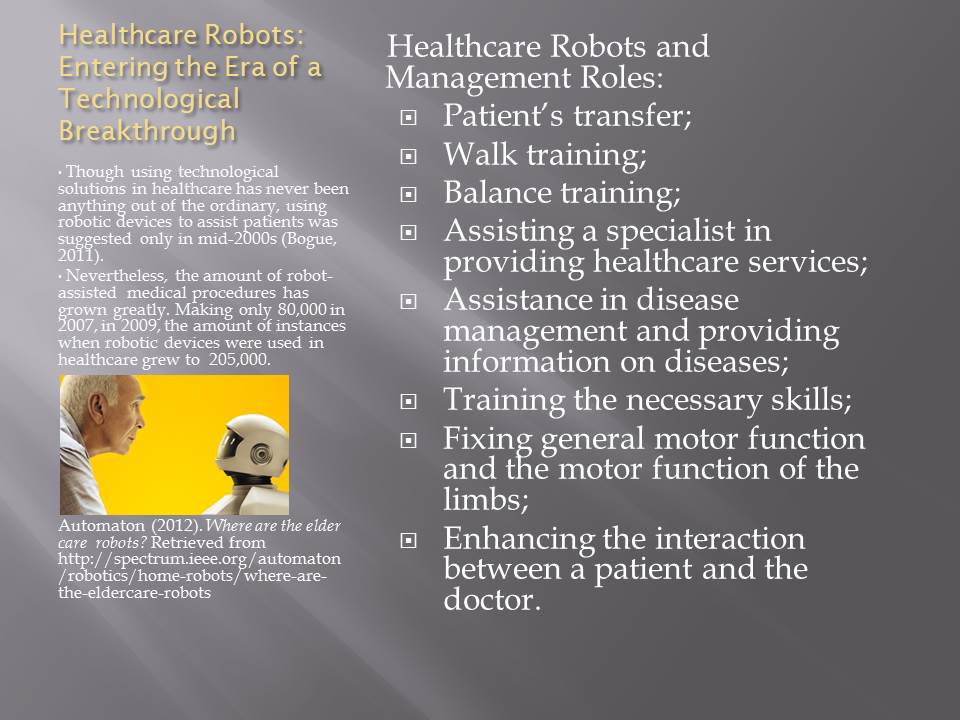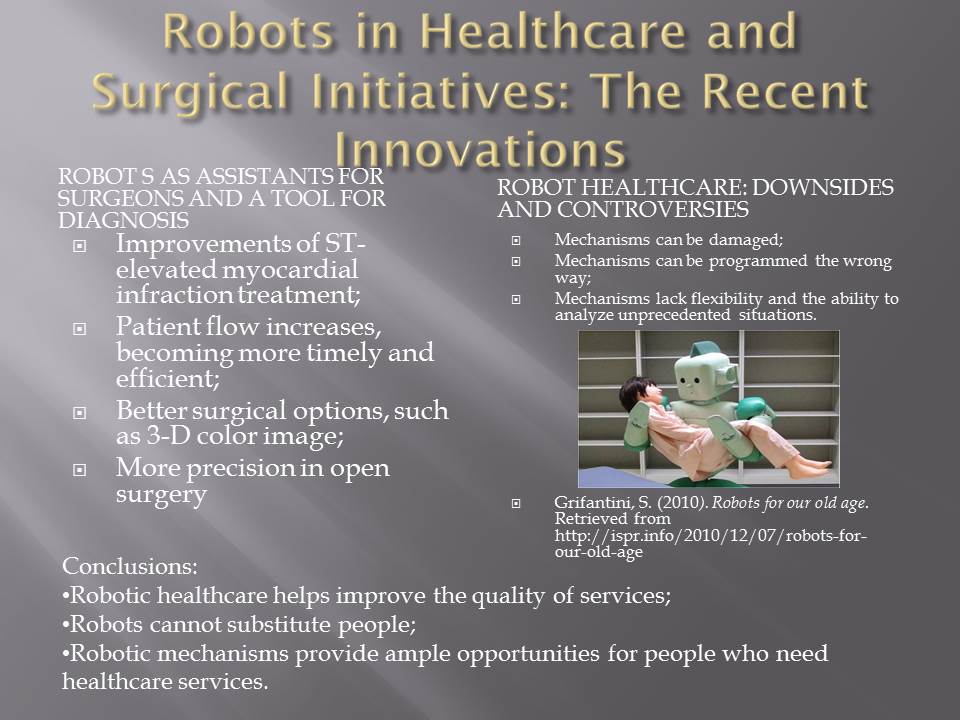Healthcare Robots and Management Roles
- Patient’s transfer;
- Walk training;
- Balance training;
- Assisting a specialist in providing healthcare services;
- Assistance in disease management and providing information on diseases;
- Training the necessary skills;
- Fixing general motor function and the motor function of the limbs;
- Enhancing the interaction between a patient and the doctor.
Though using technological solutions in healthcare has never been anything out of the ordinary, using robotic devices to assist patients was suggested only in mid-2000s (Bogue, 2011).
Nevertheless, the amount of robot-assisted medical procedures has grown greatly. Making only 80,000 in 2007, in 2009, the amount of instances when robotic devices were used in healthcare grew to 205,000.
People have been obsessed with the idea of having robots as their assistants since the very concept of a robot was created. However, using robots as medical doctors’ assistants has been only a figment of the most daring dreams until recently. According to the recently obtained data, robots have become an integral part of nursing programs over the past few months. At present, however, robots perform the required minimum of management roles, which are:
- patient’s transfer,
- walk training,
- balance training,
- assisting a specialist in providing healthcare services;
- enhancing the communication between a patient and a doctor.
It is worth mentioning, though, that the use of robots in healthcare has also become a considerable ethical issue. To justify their suspicions, the opponents of robotized healthcare services insist on the unpredictability of robotic mechanisms.

Robots in Healthcare and Surgical Initiatives: The Recent Innovations
Robot s as assistants for surgeons and a Tool for Diagnosis
- Improvements of ST-elevated myocardial infraction treatment;
- Patient flow increases, becoming more timely and efficient;
- Better surgical options, such as 3-D color image;
- More precision in open surgery.
Robot Healthcare: Downsides and Controversies
- Mechanisms can be damaged;
- Mechanisms can be programmed the wrong way;
- Mechanisms lack flexibility and the ability to analyze unprecedented situations.
Conclusions
- Robotic healthcare helps improve the quality of services;
- Robots cannot substitute people;
- Robotic mechanisms provide ample opportunities for people who need healthcare services.
Apart from using robots for management purposes, healthcare organizations have started promoting the use of robotized mechanisms in the course of surgeries. The developers of robotic mechanisms for healthcare improvement have come up with a number of innovations that are worth using to perform operations with better quality. According to Munson Healthcare data, robots help improve the surgical treatment of STEM infraction, allow for better precision in the course of operations, provide more surgical options (including 3-D) and reduce the invasive procedures to minimum (Munson Healthcare, n. d., A-4). However, it is necessary to mention that there is no silver bullet for surgical operations, and relying solely on robots will be a mistake as well. . Among the downsides of robotic healthcare, the unforeseen damage of the mechanism and a lack of flexibility can be mentioned. Therefore, robot healthcare services are an important step forward, yet it needs improvement.

Reference List
Automaton (2012). Where are the elder care robots? Web.
Bogue, R. (2011). Robots in healthcare. The Industrial Robot, 38(3), 218- 223.
Grifantini, S. (2010). Robots for our old age. Web.